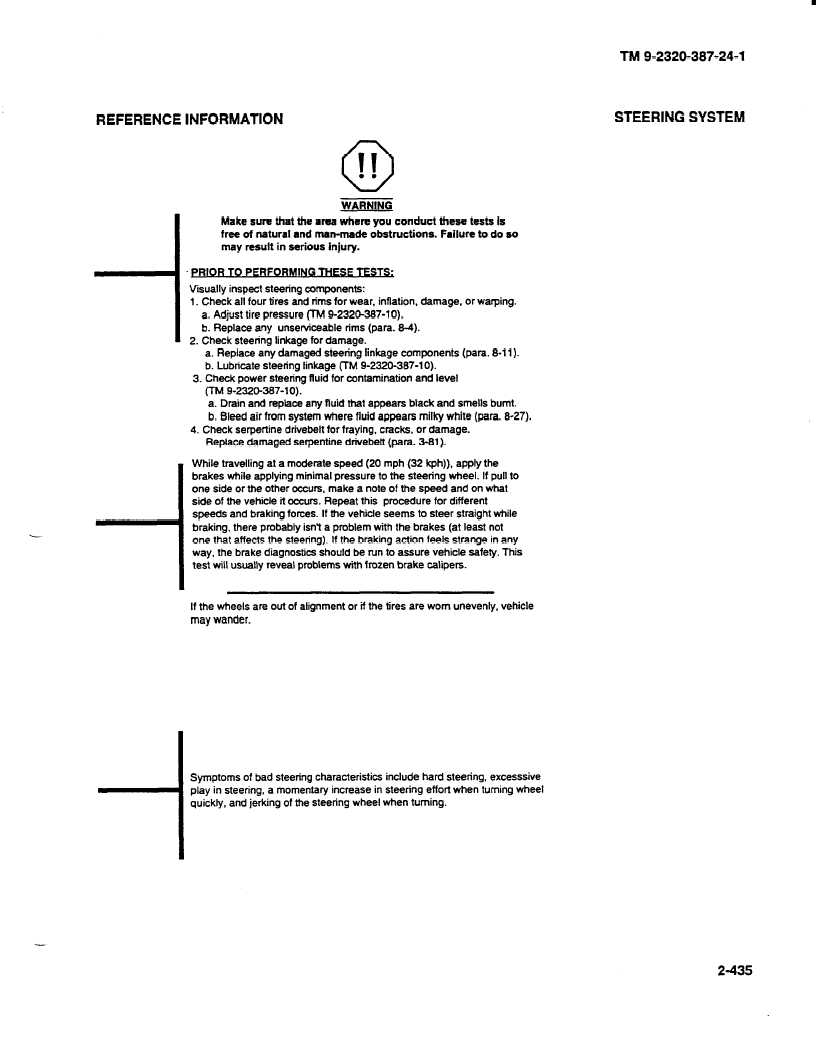REFERENCE INFORMATION
-I
-1
WARNING
Make sure that the am where you conduct
these tests is
free of natural and man-made obstructions. Failure to do so
may result in serious injury.
.
JJRIOR TO PERFORMI~THESE
TESTS,
Visually inspect steering components:
1. Check all four tires and rims for wear, inflation, damage, or warping.
a. Adjust tire pressure (TM Q-2320-387-10).
b. Replace any unserviceable
rims (para. 8-4).
2. Check steering linkage for damage.
a. Replace any damaged steering linkage components
(para. 8-11).
b. Lubricate steering linkage (TM 9-2320-387-10).
3. Check power steering fluid for contamination
and level
(TM 9-2320-387-l 0).
may wander.
a. Drain and replace any Ruid that appears black and smells burnt.
b. Bleed air from system where fluid appears milky white (para. 8-27).
4. Check serpertine drivebelt for fraying, cracks, or damage.
Replace damaged serpentine drivebelt (para. 3-81).
While travelling at a moderate speed (20 mph (32 kph)). apply the
brakes while applying minimal pressure to the steering wheel. If pull to
one side or the other occurs, make a note of the speed and on what
side of the vehicle it occurs. Repeat this procedure for different
speeds and braking forces. If the vehicle seems to steer straight while
braking, there probably isn’t a problem with the brakes (at least not
one that affects the steering). If the braking action feels strange in any
way, the brake diagnostics should be run to assure vehicle safety. This
test will usually reveal problems with frozen brake calipers.
If the wheels are out of alignment or if the tires are worn unevenly, vehicle
Symptoms of bad steering characteristics include hard steering, excesssive
play in steering, a momentary increase in steering effort when turning wheel
quickly, and jerking of the steering wheel when turning.
TM 9-2320-387-24-l
STEERING SYSTEM
2-435

